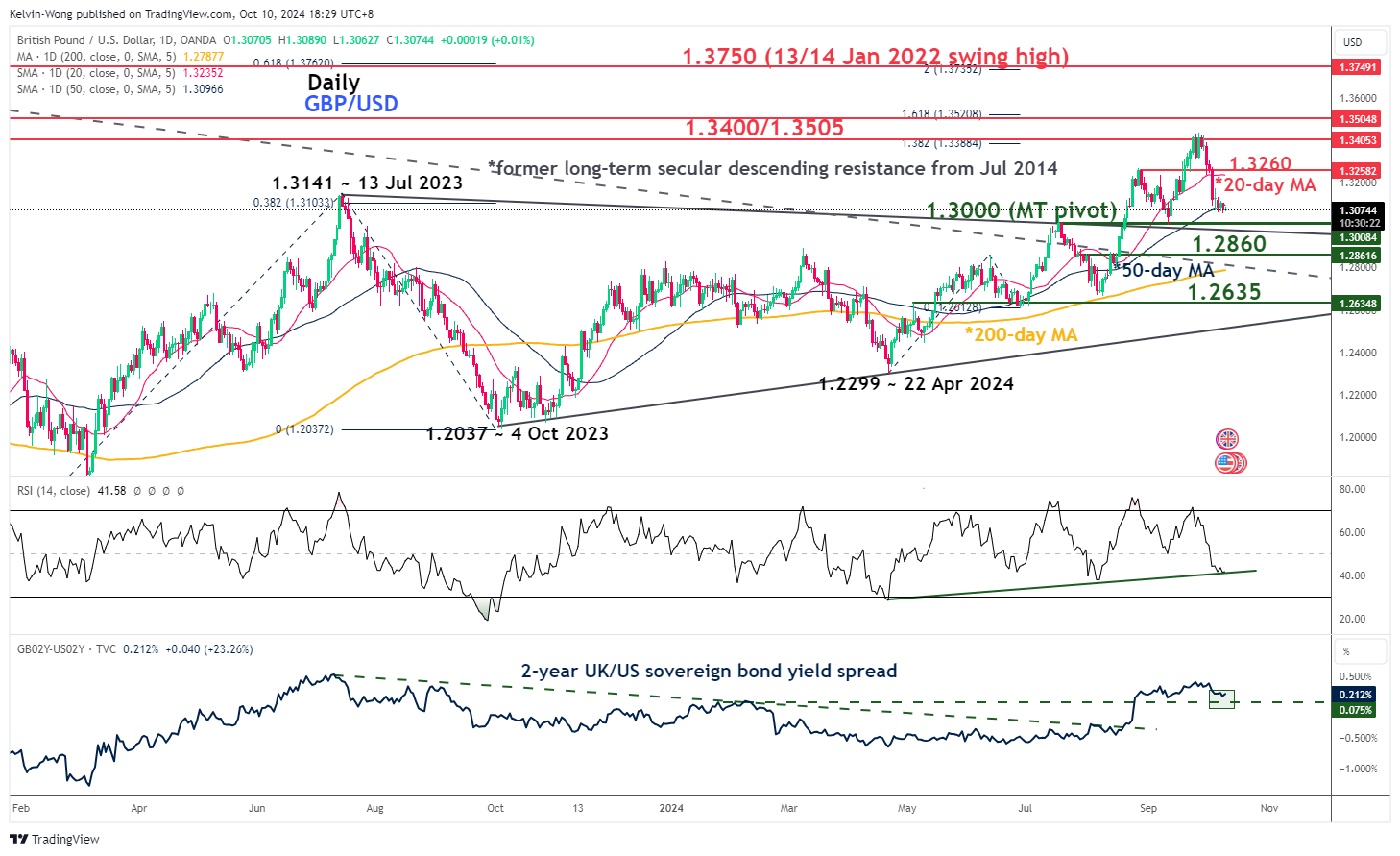GBP/USD: Bullish Reversal Likely After 4-Week Slide as US CPI Looms
2024.10.10 09:04
This is a follow-up analysis of our prior report “GBP/USD Technical: Sterling bulls are in control” published on 27 August 2024. Click for a recap.
Since our last publication, the price actions of the have rallied and hit the lower limit of the first medium-term resistance zone of 1.3400/3505 (printed an intraday high of 1.3434 on 26 September).
A Flip of BoE’s Less Dovish Stance to “Outright” Dovish
Since the Bank of England (BoE) first interest rate cut of 25 basis points (bps) to reduce its key policy interest rate to 5.00% in August, its messaging and guidance on its accommodative monetary policy have been cautiously dovish where services inflation in UK remains sticky.
Thus, market participants have priced in a shallower and slower interest rate cut cycle in the UK versus the US where the US dollar has been weakest against the British pound sterling among other major currencies; the US dollar recorded its worst 2024 year-to-date loss of -5.2% against the pound sterling on 26 September.
However, the weakness has started to reverse in the past four weeks; further enhanced by a UK media interview with BoE Governor Bailey published on 3 October. BoE’s Bailey has a “sudden” change of his cautiously dovish rhetoric to outright dovish as he raised the prospect of more aggressive rate cuts by BoE in the coming months.
The GBP/USD recorded a decline of 1.08% on 3 October, its worst daily performance in almost a year. All in all, the pound sterling has shed 2.8% from its recent 26 September high to Wednesday, 9 October low of 1.3055.
Despite the four weeks of softness, the GBP is still the strongest among the major currencies and it still has a positive year-to-date return of 2.7% against the US dollar at this time of writing.
Longer-Term UK OIS Spreads Have Started to Inch Higher 
Fig 1: UK overnight indexed swap spreads as of 8 Oct 2024 (Source: MacroMicro)
The overnight indexed swap (OIS) spread is the difference between the interest rate on long-term overnight indexed swaps and 1-month overnight indexed swaps.
Rates on OIS swaps can also be used as an indicator of the market’s expected central bank target interest rate. Widening OIS spreads indicate that the market expects the central bank to raise the interest rate in the short term, and vice versa.
The UK 6-month and 12-month OIS spread has started to trade higher since 3 October (media publication of BoE Bailey’s interview) which suggests that the interest rate swaps market has priced out some of the “dovish vibes” inherent in the past four weeks.
1.3000 Remains the Key Medium-Term Support on the GBP/USD with 1.3260 as an Upside Trigger
Fig 2: GBP/USD medium-term trend as of 10 Oct 2024 (Source: TradingView)
The recent four-week slide of 2.8% (high to low) seen in the GBP/USD has reached its 50-day moving average.
In conjunction, the daily RSI momentum indicator has also hit a parallel ascending trendline support at the 40 level.
In addition, the 2-year yield spread of the UK sovereign bond (gilt) over the US Treasury note has just started a rebound right above its key medium-term support of 0.07%
Hence in the lens of technical analysis, these positive elements suggest a potential bullish reversal in the GBP/USD to renew its impulsive up sequence within its medium-term uptrend phase.
Watching the 1.3000 key medium-term pivotal support and clearance above 1.3260 (also the 20-day moving average) increases the odds of the potential bullish reversal scenario to revisit 1.3400/1.3505 before the next medium-term resistance comes in at 1.3750.
However, failure to hold at 1.3000 invalidates the bullish expectation for an extension of the corrective decline to expose the next medium-term supports at 1.2860 and 1.2635.
Original Post








